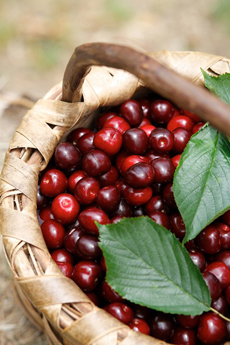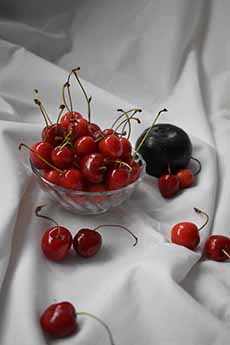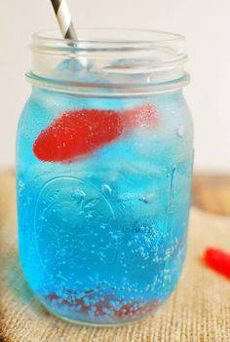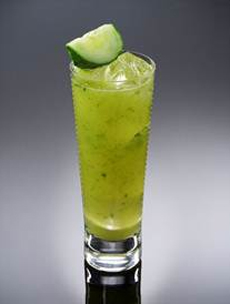
[1] Cool as a cucumber lemonade (photo © Hendricks Gin).
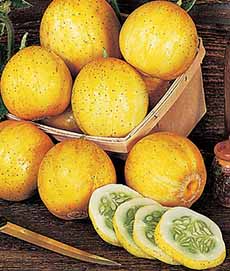
[2] Why not grow these heirloom lemon cucumbers at home. Head to Burpee for the seeds (photos #2 through #5 © Burpee).
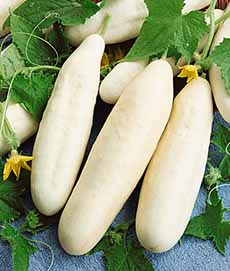
[3] These White Wonder cucumbers were a mutation. The seeds were then developed into this eye-catching variety, which happens to be extra-crisp.

[4] Check farmers markets for specialty varieties like the Armenian cucumber, shown here.
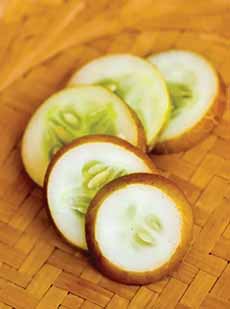
[5] Brown Russian cucumbers have a brown peel.
|
|
The different types of cucumbers are below, but we’re starting with a cocktail to celebrate National Cucumber Day, June 13th.
Hendrick’s Gin sent us a cocktail recipe called Cucumber Lemonade. We enjoyed both the drink and the garnish and thought: Why don’t we use more cucumber garnishes?
The Cucumber Lemonade recipe is below, but you can also use a cucumber garnish with:
Club soda
Citrus sodas: Fresca, 7-Up, Sprite
Savory cocktails: Bloody Mary, Martini
Fruit or vegetable juices and ades
Tonic Water
Try adding a cucumber spear to these drinks, and you’ll have a crunchy snack to enjoy with it.
> The history of cucumbers.
RECIPE: HENDRICK’S CUCUMBER LEMONADE
Ingredients For 1 Drink
3 parts Hendrick’s Gin
2 parts fresh squeezed lemon juice
2 parts simple syrup
Ice
Sparkling water
Garnish: cucumber spear
Preparation
1. COMBINE the first three ingredients in a tall glass. Add ice.
2. TOP with sparkling water, stir gently and garnish with a cucumber spear or wedge.
CUCUMBER TYPES
You can garnish with any supermarket cucumber, but why not have fun and look for specialty varieties?
Add them to your salads, and serve them as crudités.
And check out the history of cucumbers.
Growers define cucumbers in five categories: slicing, pickling, burpless, space savers, and specialty.
Slicing cucumbers include the typical supermarket variety: long and straight with thin, non-bitter skins and seeds. They are bred for slicing and eating. The skin of younger cucumbers is tender enough to be eaten. As the fruit* grows, the skins thicken and more seeds develop. If left on the vine too long, the flesh may become bitter. Example: Straight Eight cucumber, the long supermarket cucumber.
Pickling cucumbers are shorter and stouter. They are bred to have thinner skins and drier flesh—, which allows them to soak up more of the pickling brine—plus smaller seeds. The smaller in size, the easier they are to prep and pickle. Examples: Boston Pickling, Calypso, Sassy.
Burpless cucumbers are slicing cucumbers that have been bred to produce less of the bitter chemical that releases gas in the stomach. They were developed because enough Americans had this sensitivity. Examples: English cucumber, Persian cucumber.
Space saver cucumbers, also called container cucumbers, are bred to create compact vines that fit into small gardens and deck planters. Examples: Apple, Lemon, Lebanese, Picklebush, Spacemaster.
Specialty cucumbers/Heirloom cucumbers are old varieties that have less developed disease resistance than modern hybrids, but are appreciated for their different flavors, shapes and/or colors. Look for them in farmers’ markets. For example:
> Armenian cucumbers (photo #4) are long, light green and heavily ribbed. They taste like a melon without the sweetness. Their ribbed shape makes interesting cross-sections when sliced.
> Lemon cucumbers (photo #2) look like speckled lemons. White cucumbers (photo #3) are extra-crisp.
> Crystal Apple cucumbers, heirlooms from New Zealand, have pale green, roundish fruits resembling Granny Smith apples.
> Suyo Long is a traditional variety from China that delivers burpless, sweet ribbed fruits that can be used for slicing or pickling. Hybrids like Palace King have a ripples of yellow on emerald green skins.
There are nearly 100 varieties of cucumbers grown in most countries in the world.
Here’s your homework:
Go to a farmers market and look for specialty cucumbers. If you have a garden, check out the options and plan to plant at least one variety next year.
By the way: cucumbers (Cucumis sativus) are a fruit, not a vegetable. They are members of the Cucurbitaceae family, which also includes watermelons, pumpkin, and zucchini, among others.
|
